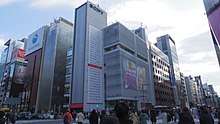Tsunami
A tsunami is a giant wave hitting the coast. It is usually caused by an earthquake or underwater landslide (also often caused by an earthquake). At sea the wave is hardly noticeable, but when it is slowed down by a shallow area, such as near the coastline, it becomes steeper and can rise to a height of tens of meters, with an enormous destructive force.
Understand

If the epicenter of an earthquake is under the ocean or a large lake, the earthquake will move huge amounts of water. Even a small earthquake can also cause an underwater landslide, with similar effects. The tsunami risk depends on in what direction the water is moved. In the worst case, such as when the edge of a tectonic moves up- or downwards along the plate boundary, the water will move more or less in a coordinated direction, causing a huge wave.
Tsunamis can strike the coast minutes or hours after an earthquake, depending on how far away from the coast the epicenter was. Tsunamis may travel as fast as a commercial jet and are often invisible before it is too late, as they grow in height only as they hit the shallower waters near the coast. Moreover, tsunamis can travel very far – for instance the 2004 Indian Ocean tsunami was caused by an earthquake north of Sumatra but also wreaked havoc on the east coast of Africa several hours later.
There has long been a tsunami warning center for the Pacific Ocean and after the 2004 tsunami one was installed for the Indian Ocean as well. Although they are not perfect and false alarms do occur, their warnings should be heeded, as the worst that can happen in case of a false alarm is a ruined day, while a tsunami can easily kill you and your company.
Natural warning signs

Should you find yourself in the unlikely situation of a tsunami where there is no warning infrastructure, there are usually what are referred to as "natural warning signs" – nature itself telling you that a tsunami is coming. If an earthquake occurs right on the coast you may only have a matter of minutes to escape, so don't hesitate to evacuate. Some noticeable natural warning signs are:
- Strange behavior in animals such as restlessness (may or may not occur)
- Water receding and exposing ocean floor that is usually under water at all times (this is a dead giveaway that the tsunami is imminent and you have, at best, a couple of minutes to flee from this point on)
- Notable shocks of an earthquake off or close to the coast (if you are at the coast and feel an earthquake, don't wait for any official warnings, but head inland or to higher ground immediately)
- Loud or unusual noises coming from the sea
During a tsunami

During a tsunami warning, follow the escape routes and pay close attention to what the authorities are saying as they are usually (especially in countries with a Pacific coast line) well aware of the nature of a tsunami and have refined their emergency plans with earlier tsunamis. The most important thing during a tsunami is obviously to get to high ground. However, trees and even the roofs of houses are a sub-par alternative to mountains as the enormous force of the tsunami may simply destroy the tree or even the house you are seeking shelter in (or on the top of).
Under no circumstances should you count on your swimming ability against such a powerful current! If the absolute worst happens and you are swept away by the water, try to hold onto a floating piece of debris and await rescue.
Do not go to the coast to sight-see or watch for a tsunami! During the tsunami of March 2011 triggered by the Tōhoku earthquake, a 25-year-old man was swept into the Pacific Ocean near the Klamath River in Northern California. The man and some friends had travelled to the shoreline to take photos of the incoming waves - his friends survived, but the man's body was never found.
After a tsunami
Be aware that there may be more than one tsunami wave and they can occur up to 24 hours after the initial wave, so remain evacuated until you are told by officials that it is safe to return.
When returning to buildings, be aware that floodwaters may have caused serious damage to infrastructure. Floodwater may also be contaminated with sewage.
Avoid sightseeing and only travel if necessary. If you have made travel arrangements with an airline or otherwise, it is best to contact them for advice.